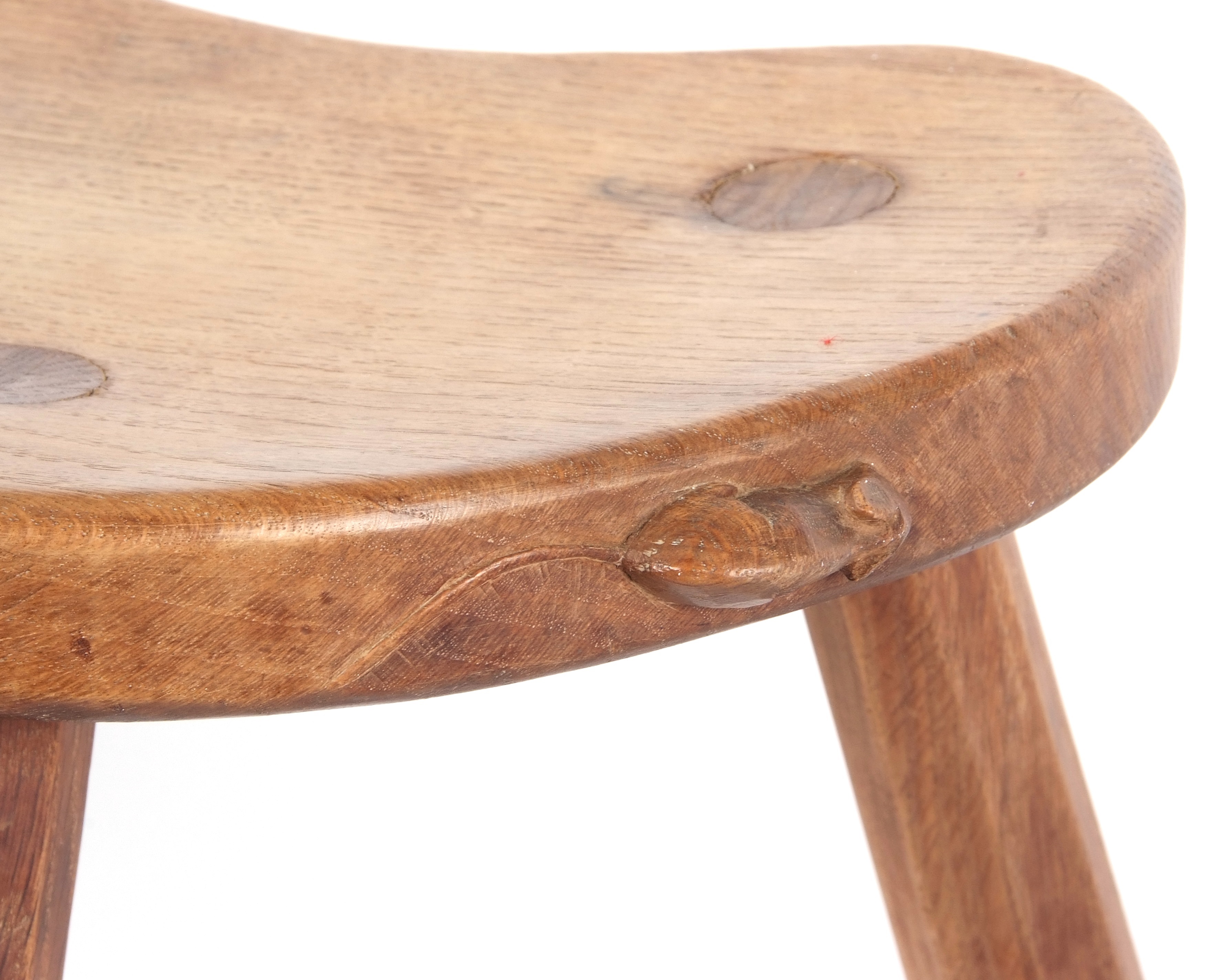

01/06/2025 General News
If asked to name famous furniture makers, few people could come up with more than a handful of names: Chippendale and Hepplewhite from the 18th century perhaps, and from the 20th century, maybe Frank Lloyd Wright, Marcel Breuer and Philippe Starck, writes Henry Hammond.
But interestingly, one of the most sought-after makers in the saleroom is someone who most people know only by his nickname. Robert Thompson was born in North Yorkshire in 1876, the son of the village carpenter and wheelwright. It wouldn’t be until he was in his 40s that he would acquire the moniker by which the world generally knows him today: Mouseman.
Thompson left school and took an apprenticeship at an engineering company, but when his father died in 1895, he returned home to take over the family business.
Helped by a series of commissions after the end of the First World War from Ampleforth College, especially to make the furniture for Ampleforth Abbey, Thompson started to build a reputation amongst the ecclesiastical community for his handcrafted oak church furniture and fittings. It is said that he was inspired by the splendid medieval carvings in Ripon Cathedral.
Inspired by leading lights of the Arts and Crafts movement such as William Morris and Thomas Carlyle, Thompson developed a range of home furniture in that style. Many of these items, designed in the 1920s, remain in production today.
So where, you might be asking, does the nickname ‘Mouseman’ come from? The story goes that while he was carving a cornice for a screen in the early 1920s, he had a conversation with a colleague in which it was claimed he was ‘as poor as a church mouse’. He was inspired to carve a small mouse into the screen, and immediately realised what a unique signature for his work this would make.
From that point onwards every piece he made featured such a carving, although it wasn’t until 1931 that he thought to register the trademark with the Patent Office. The mouse – each one of which took Thompson around 45 minutes to carve – was said to signify ‘industry in quiet places’.
The golden era for Mouseman furniture was the 1920s and 1930s, and pieces from this era are the ones which fetch the highest prices in the saleroom. Although Thompson died in 1955, his workshop still exists, run by his descendants, with modern pieces also featuring the distinctive mouse carving.
Initially it was in Yorkshire that Mouseman had his main following, but over the past 20 years there has been an explosion of collecting, not just across the rest of the UK, but in North America and the Far East.
In 2003 a two-section cupboard made by Thompson in 1923 sold for more than £40,000 in New York, and this remains the record price paid at auction for one of his works. But the enduring appeal of his work means there are always buyers for Mouseman furniture –at Keys the past 12 months have seen a small wardrobe sell for £5,900, and even a 36cm high three-legged milking stool fetch a healthy £350.
The combination of traditional craftsmanship, Arts and Crafts design and his quirky trademark means that Robert ‘Mouseman’ Thompson deserves to be in that list with the greats of 20th century furniture design.
Keys Fine Art Auctioneers next Fine Sale, which will include an extensive furniture section, takes place in July. Items can still be consigned for the sale; more details at www.keysauctions.co.uk.